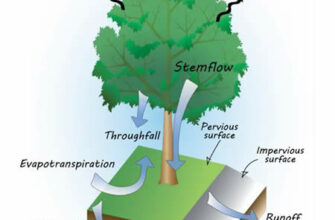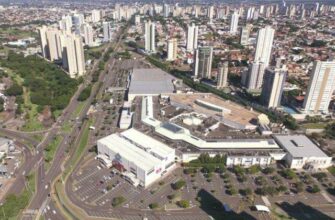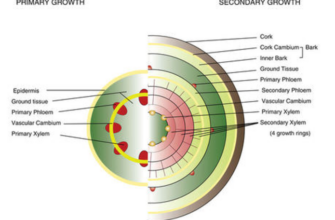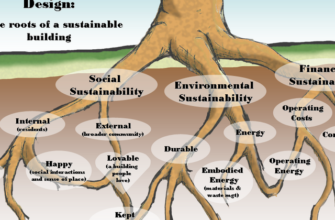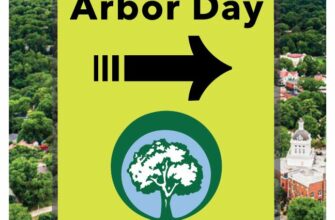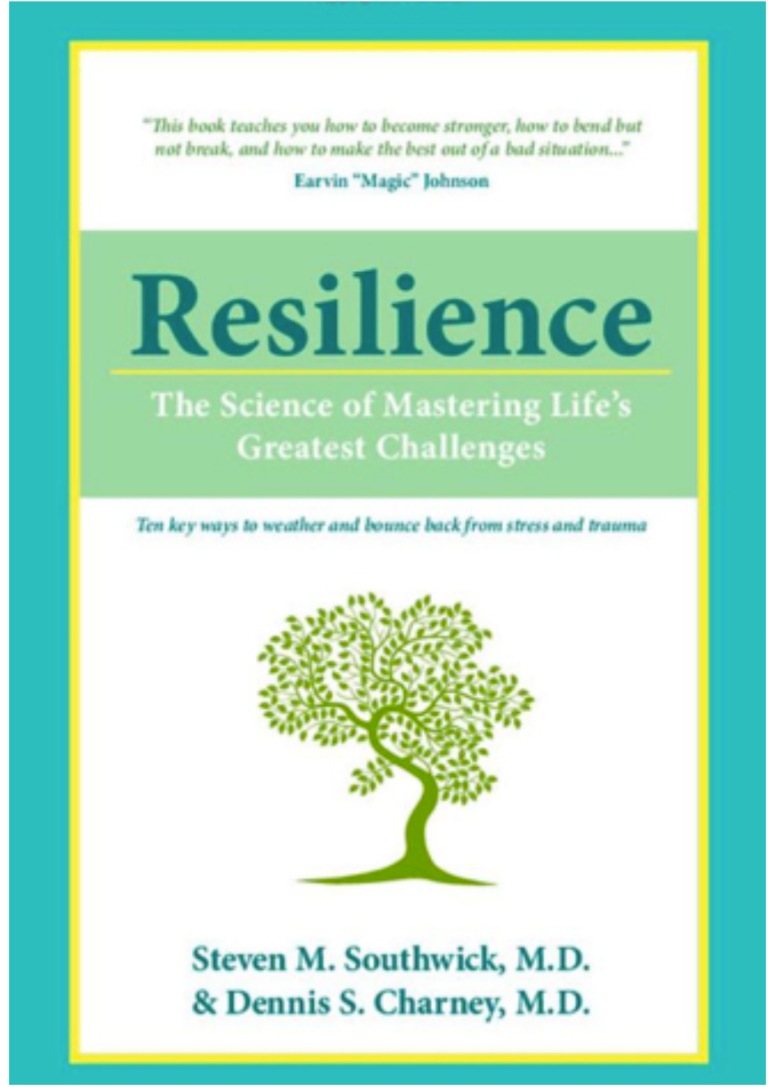
- Rooted in Resilience: Recovering from a Derecho
- Rooted in Resilience
- Understanding the Derecho
- Impact on Communities
- Assessing the Damage
- Emergency Response Efforts
- Restoring Power
- Clearing Debris
- Repairing Infrastructure
- Supporting Local Businesses
- Providing Shelter
- Addressing Health Concerns
- Rebuilding Schools
- Strengthening Resilience
- Community Engagement
- Long-Term Recovery Planning
- Lessons Learned
- A Path Forward
Rooted in Resilience: Recovering from a Derecho
Resilience is the key to rebuilding after a derecho. When a powerful storm sweeps through a community, leaving destruction in its wake, it takes a strong and determined spirit to pick up the pieces and start anew. The path to recovery may be long and challenging, but with resilience, it is possible to rebuild and create a stronger, more resilient community.
A derecho is a type of storm characterized by strong winds and intense thunderstorms. It can cause widespread damage, uprooting trees, damaging buildings, and disrupting power and communication systems. The aftermath of a derecho can be devastating, leaving communities in a state of chaos and despair. However, it is in these moments of crisis that the true strength and resilience of a community are revealed.
Being rooted in resilience means having the ability to adapt and bounce back in the face of adversity. It means coming together as a community, supporting one another, and finding innovative ways to rebuild. It means not giving up, even when the task at hand seems insurmountable. It means finding the strength to rebuild not just the physical structures that were damaged, but also the emotional and psychological well-being of the community.
“Resilience is not just about bouncing back; it’s about bouncing forward.”
Rebuilding after a derecho requires a multifaceted approach. It involves assessing the damage, developing a plan, and mobilizing resources. It requires the collaboration of government agencies, non-profit organizations, and community members. It also necessitates investing in long-term solutions that can mitigate the impact of future storms and enhance the resilience of the community.
Ultimately, the process of rebuilding after a derecho is a testament to the human spirit. It is a reminder that even in the face of destruction, there is hope. With resilience as our guiding force, we can transform disaster into an opportunity for growth and create a more resilient future for all.
Rooted in Resilience
When a derecho swept through our community, leaving destruction in its wake, we were faced with the daunting task of recovering and rebuilding. However, our spirit of resilience prevailed, as we came together to face the challenges head-on.
Resilience is the ability to bounce back and adapt in the face of adversity. It is a quality that is deeply rooted in our community, and it was put to the test in the aftermath of the derecho. Despite the devastation, we refused to be defeated, and instead, we found strength in our collective determination to rebuild.
Recovering from a natural disaster like a derecho is no small feat. It requires the collaboration and support of individuals, organizations, and government agencies. We relied on the power of community to come together and support one another during these difficult times. From providing shelter and food to organizing cleanup efforts, our community united as one to overcome the challenges we faced.
In the process of rebuilding, we learned valuable lessons about preparedness and resilience. We recognized the importance of having emergency plans in place and being proactive in our response to future disasters. We also discovered the strength that comes from working together and supporting one another.
Our journey of recovery is ongoing, but we are confident that we will emerge stronger than ever. The resilience that is deeply ingrained in our community will continue to guide us as we rebuild and create a better future for ourselves and future generations.
Understanding the Derecho
A derecho is a powerful and destructive weather phenomenon characterized by a long-lived line of severe thunderstorms. These storms are known for their strong straight-line winds, which can reach speeds of over 100 miles per hour. The word “derecho” comes from the Spanish word for “straight” and accurately describes the intense and fast-moving nature of these storms.
Resilience is a key factor in recovering from a derecho. Communities that are well-prepared and have robust emergency response plans in place are better equipped to handle the aftermath of such a devastating event. This includes having a strong network of first responders, access to emergency supplies, and effective communication systems to keep residents informed and safe.
Recovering from a derecho can be a challenging and lengthy process. In addition to the immediate damage caused by the storm, there may be long-term effects such as power outages, infrastructure damage, and disruption to daily life. It is important for affected communities to come together and support one another during this time, whether through volunteering, donating resources, or providing emotional support to those in need.
Understanding the science behind a derecho can also help communities better prepare for future events. By studying the atmospheric conditions that contribute to the formation of these storms, meteorologists can improve their forecasting capabilities and provide more accurate and timely warnings to the public. This knowledge can help residents take necessary precautions and minimize the impact of future derecho events.
Impact on Communities
The derecho that struck the region had a profound impact on the communities it affected. The destructive force of the storm tested the resilience of these communities and left them grappling with the aftermath. Homes were destroyed, power lines were downed, and essential services were disrupted, leaving residents in a state of shock and vulnerability.
However, despite the devastation, these communities have shown incredible resilience in their efforts to recover and rebuild. Local residents banded together to provide support and assistance to those in need, demonstrating the power of community solidarity. Organizations and volunteers worked tirelessly to clear debris, repair infrastructure, and restore essential services.
The impact of the derecho on these communities extends beyond the physical damage. The emotional toll cannot be underestimated, as residents grapple with the trauma and loss caused by the storm. The road to recovery will be a long one, but these communities have shown a determination to rebuild and emerge stronger than before.
As these communities continue to recover, it is imperative that they receive the necessary resources and support to rebuild their lives. This includes financial assistance, access to mental health services, and support for small businesses. By investing in the recovery of these communities, we can help them not only rebuild, but also create a more resilient future that can withstand future challenges.
Assessing the Damage
After the devastating derecho, the first step in recovering from such a destructive storm is to assess the damage. This process involves carefully examining the affected areas to determine the extent of the destruction and identify the areas that need immediate attention.
Rooted in resilience, the communities affected by the derecho have come together to form assessment teams. These teams consist of experts who specialize in different areas such as structural engineers, electricians, and arborists. They work tirelessly to evaluate the damage caused by the storm and create a comprehensive report.
One of the key aspects of assessing the damage is identifying the buildings and infrastructure that have been severely impacted. This includes homes, businesses, power lines, and roadways. The assessment teams document the extent of the damage, noting any structural weaknesses, electrical issues, or other hazards that need to be addressed.
In addition to evaluating the physical damage, the assessment teams also take into account the emotional toll the storm has taken on the community. They assess the mental health needs of the residents and provide resources for counseling and support. This holistic approach recognizes the importance of addressing both the physical and emotional well-being of those affected.
Overall, the assessment process is a crucial step in the recovery process after a derecho. It provides a clear understanding of the damage caused by the storm and helps prioritize the necessary actions to rebuild and restore the affected areas. Through resilience and determination, the communities can overcome this adversity and emerge stronger than ever.
Emergency Response Efforts
When a derecho strikes, emergency response efforts are rooted in the resilience of the affected communities. These efforts involve a coordinated response from various organizations and agencies to provide immediate assistance and support to those impacted by the storm.
One of the key aspects of emergency response efforts is ensuring the safety and well-being of the affected individuals. This includes search and rescue operations to locate and evacuate people who may be trapped or in immediate danger. Additionally, emergency shelters are set up to provide temporary housing for those who have been displaced from their homes.
Another crucial component of emergency response efforts is the provision of essential supplies and services. This includes distributing food, water, and other necessities to those in need. Mobile medical units are also deployed to provide medical care and treatment to the injured. Additionally, efforts are made to restore power and communication services as quickly as possible.
The coordination of these emergency response efforts is facilitated through the establishment of a command center, where representatives from various agencies and organizations come together to share information, assess the situation, and make decisions. This ensures a unified and efficient response to the crisis.
Furthermore, community resilience plays a vital role in emergency response efforts. Local residents often step up to assist their neighbors and support the response efforts. This can include volunteering at shelters, providing transportation for those in need, or helping with the cleanup and rebuilding process.
In conclusion, emergency response efforts following a derecho are rooted in the resilience of the affected communities. Through coordinated search and rescue operations, provision of essential supplies and services, and the support of local residents, these efforts aim to provide immediate assistance and help rebuild the affected areas.
Restoring Power
When a derecho strikes, one of the most critical tasks in the recovery process is restoring power to the affected areas. The powerful winds and intense storms of a derecho can cause widespread power outages, leaving communities rooted in darkness and without essential services.
Restoring power after a derecho requires a coordinated effort from power companies, utility workers, and emergency response teams. These dedicated individuals work tirelessly to assess the damage, repair downed power lines, and restore electricity to homes, businesses, and public facilities.
One of the first steps in restoring power is conducting a thorough assessment of the damage caused by the derecho. This involves inspecting power lines, transformers, and other electrical infrastructure to identify any areas that need repair or replacement. Once the assessment is complete, utility workers can begin the process of repairing or replacing damaged equipment.
Restoring power after a derecho often involves a complex network of interconnected systems. Utility workers must carefully coordinate their efforts to ensure that power is restored safely and efficiently. In some cases, temporary generators may be used to provide power to critical facilities, such as hospitals or emergency response centers, while repairs are underway.
Rebuilding after a derecho takes time and resilience. Restoring power is a crucial step in the recovery process, as it allows communities to regain a sense of normalcy and begin the process of rebuilding their lives. The hard work and dedication of those involved in restoring power after a derecho are essential in helping affected communities recover and thrive once again.
Clearing Debris
After a derecho, the first step in recovering is to clear the debris left behind by the storm. This process is crucial in order to restore a sense of normalcy and safety to the affected area. The debris, which can include fallen trees, broken branches, and scattered debris, can pose significant hazards and impede recovery efforts.
Clearing the debris requires a coordinated effort involving local authorities, emergency responders, and community volunteers. Safety is of utmost importance during this process, as there may be hidden dangers such as downed power lines or unstable structures. Prioritizing the removal of larger debris that blocks roads and access to homes and buildings is essential to facilitate the recovery process.
Specialized equipment, such as chainsaws and heavy machinery, is often utilized to clear the debris efficiently. Trained personnel assess the situation and determine the best approach to remove the debris safely. This may involve cutting up fallen trees, removing large branches, and disposing of the debris in designated areas.
Clearing debris not only helps restore the physical infrastructure but also plays a crucial role in the emotional recovery of the affected community. Seeing the debris removed and the area cleaned up brings a sense of progress and hope. It is a tangible sign that the community is rooted in resilience and determined to rebuild after the derecho.
Repairing Infrastructure
The recent derecho that swept through our area left behind a trail of destruction, causing significant damage to our infrastructure. As we focus on recovering from this natural disaster, it is crucial to prioritize the repair and restoration of our essential infrastructure, which is rooted in the resilience of our community.
One of the key areas that requires immediate attention is our transportation infrastructure. Roads and bridges have been severely affected, making it difficult for people to commute and access essential services. Repairing and rebuilding these crucial transportation links will not only improve connectivity but also ensure the smooth flow of goods and services, aiding in the overall recovery process.
Another critical aspect of infrastructure that needs repair is our energy grid. The derecho caused widespread power outages, leaving many without electricity for days. Restoring power to affected areas and strengthening the energy grid will not only provide much-needed relief to the community but also ensure a more resilient power supply in the face of future natural disasters.
In addition to transportation and energy, our water and sewage infrastructure also suffered significant damage. Repairing and upgrading water treatment plants, pipelines, and sewage systems is essential to ensure the provision of clean and safe water to our community. These repairs will also help prevent the spread of waterborne diseases and maintain public health.
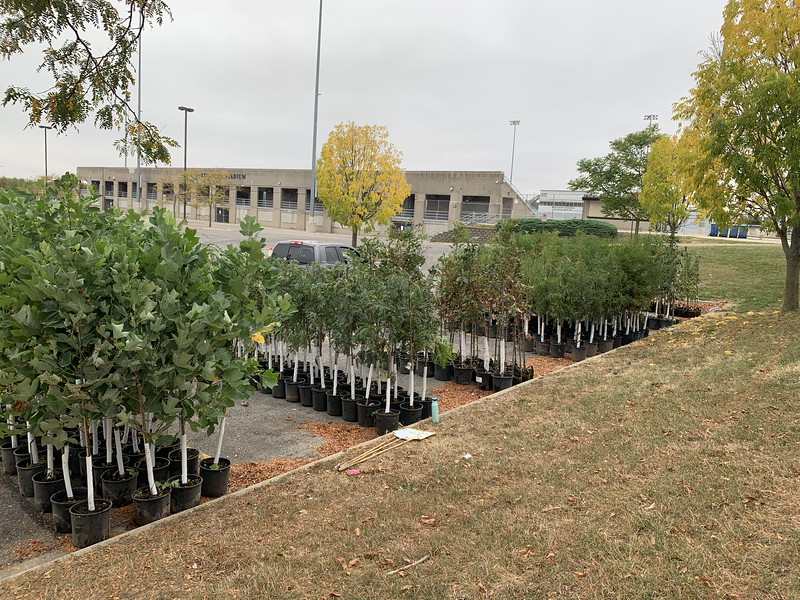
Lastly, our communication infrastructure needs attention. The derecho disrupted telecommunications networks, making it difficult for people to reach out for help and stay connected with their loved ones. Repairing and strengthening our communication infrastructure, including cell towers and internet connectivity, is crucial for effective emergency response and community resilience.
Repairing our infrastructure after the derecho is a complex and challenging task. It requires a collaborative effort from government agencies, private sector partners, and the community. By investing in the repair and restoration of our essential infrastructure, we can rebuild stronger and more resilient, ensuring that our community is better prepared to face future challenges.
Supporting Local Businesses
Resilience is a key quality of local businesses in the aftermath of a derecho. These small businesses are the backbone of the community and play a vital role in its recovery. By supporting local businesses, we can contribute to the resilience of our community and help it bounce back from the impact of the derecho.
One way to support local businesses is by shopping locally. By purchasing products and services from local shops and businesses, we can help them recover and rebuild. This not only provides them with much-needed revenue, but it also helps to create jobs and stimulate the local economy.
Another way to support local businesses is by spreading the word. Sharing positive experiences and recommending local businesses to friends and family can help generate more customers and increase their visibility. This can be done through word-of-mouth, social media, or by leaving reviews on online platforms.
Supporting local businesses also means understanding the challenges they face and being patient. It takes time for businesses to recover and rebuild after a natural disaster like a derecho. By being patient and continuing to support them, we can help them overcome these challenges and thrive once again.
In addition to shopping locally and spreading the word, community events and initiatives can also play a role in supporting local businesses. Organizing events that promote local businesses, such as markets or fairs, can attract customers and provide a platform for businesses to showcase their products and services.
In conclusion, supporting local businesses is crucial in the recovery process after a derecho. By shopping locally, spreading the word, being patient, and organizing community events, we can contribute to the resilience of our community and help local businesses recover and thrive.
Providing Shelter
In the aftermath of a derecho, one of the most urgent needs is to provide shelter for those who have lost their homes or whose properties have been damaged. Resilience is key in recovering from such a devastating natural disaster, and providing temporary housing is an essential part of the recovery process.
Emergency shelters are quickly set up to accommodate those in immediate need of a safe place to stay. These shelters offer a temporary solution while individuals and families figure out their long-term housing options. They provide a roof over people’s heads and a sense of security during a time of uncertainty.
Volunteer organizations play a crucial role in providing shelter after a derecho. They work tirelessly to set up and manage these temporary shelters, ensuring that basic needs such as food, water, and hygiene facilities are met. These organizations also offer support and resources to help individuals and families navigate the process of finding more permanent housing.
In addition to emergency shelters, efforts are made to repair and rebuild damaged homes. This involves assessing the extent of the damage and providing assistance to homeowners in need of repairs. Community organizations, government agencies, and volunteers come together to provide the necessary resources and labor to rebuild homes, helping affected individuals and families regain a sense of stability.
Overall, providing shelter is a critical component of the recovery process after a derecho. It not only addresses the immediate needs of those who have been displaced, but also contributes to the resilience of the community as a whole. By offering a safe and secure place to stay, individuals and families can begin to rebuild their lives and move forward after the devastation of a derecho.
Addressing Health Concerns
Recovering from a natural disaster requires not only physical resilience, but also addressing the health concerns that may arise in the aftermath. The community, rooted in its determination to rebuild, must prioritize the well-being of its residents.
One of the main health concerns after a derecho is the potential for injuries. The powerful winds and flying debris can cause cuts, bruises, and broken bones. It is important for the community to have access to medical care and emergency services to promptly address these injuries and prevent further complications.
In addition to physical injuries, the mental health of individuals affected by the disaster should also be addressed. The trauma and stress of losing homes, belongings, and even loved ones can have a lasting impact on mental well-being. Mental health professionals and support services should be made available to help individuals cope with their emotions and provide them with the necessary tools to rebuild their resilience.
Another health concern is the potential for waterborne diseases. The destruction caused by a derecho can compromise the water supply, leading to contamination and the spread of bacteria and viruses. It is crucial for the community to have access to clean and safe drinking water. Regular testing and monitoring of the water supply should be implemented to ensure its quality.
Furthermore, the community should address the issue of food security. The destruction of crops and food storage facilities may lead to limited access to nutritious food. Efforts should be made to provide food assistance programs and establish community gardens to ensure that residents have access to fresh and healthy food options.
In conclusion, addressing health concerns is an essential part of the recovery process after a derecho. By prioritizing access to medical care, mental health support, clean water, and nutritious food, the community can ensure the well-being of its residents and foster a resilient and thriving community.
Rebuilding Schools
After the devastating derecho swept through our community, our schools were left in ruins. However, our resilience and determination to rebuild is rooted deeply within us.
The rebuilding process for our schools has been a challenging journey, but we have made significant progress. We have come together as a community, pooling our resources and talents to restore our educational facilities.
One of the key aspects of rebuilding our schools is ensuring that they are not only structurally sound, but also equipped with the necessary resources for our students to thrive. We have prioritized the installation of state-of-the-art technology, updated classrooms, and modern learning materials.
Additionally, we have placed a strong emphasis on creating a safe and inclusive environment for our students. We have implemented measures to enhance security, such as installing surveillance systems and reinforcing doors and windows. Furthermore, we have focused on promoting diversity and inclusion by incorporating cultural awareness programs and fostering a sense of belonging among our students.
As we continue to rebuild our schools, we are also taking this opportunity to improve the overall educational experience for our students. We are investing in professional development programs for our teachers, providing them with the tools and resources they need to deliver high-quality education.
Our journey to rebuild our schools is far from over, but we are committed to creating a better future for our students. Through our resilience and determination, we will not only restore our educational facilities, but also foster an environment that nurtures the growth and success of our students.
Strengthening Resilience
Resilience is the ability to recover from difficult or challenging situations. It is rooted in our ability to adapt and bounce back from adversity. Strengthening resilience is crucial in rebuilding and recovering after a derecho, a powerful and destructive windstorm.
One way to strengthen resilience is by fostering a sense of community. Coming together as a community can provide support, resources, and a sense of belonging. This can be achieved through organizing community events, creating neighborhood watch groups, or establishing local support networks.
Another important aspect of strengthening resilience is investing in infrastructure and emergency preparedness. This includes building stronger and more resilient buildings, improving communication systems, and implementing early warning systems. By investing in these measures, communities can better withstand the impact of future disasters.
Education and awareness are also key in strengthening resilience. Providing information and resources to community members about disaster preparedness, emergency response, and recovery strategies can empower individuals to take action and be better prepared for future challenges.
Furthermore, fostering a culture of innovation and adaptability can contribute to strengthening resilience. Encouraging individuals and organizations to think creatively and find new solutions to challenges can help communities recover more quickly and effectively after a disaster.
In conclusion, strengthening resilience is essential in rebuilding and recovering after a derecho. By fostering a sense of community, investing in infrastructure, promoting education and awareness, and encouraging innovation, communities can become more resilient and better prepared to face future challenges.
Community Engagement
Community engagement is a crucial aspect of the recovery process after a derecho. It is rooted in the idea that the community itself plays a vital role in rebuilding and moving forward. The engagement of community members, both individuals and organizations, is essential in assessing the needs of the community and developing a comprehensive recovery plan.
One way community engagement can be fostered is through open forums and town hall meetings. These provide a platform for residents to voice their concerns, share their experiences, and contribute ideas for the recovery process. It is important for community leaders to actively listen to these voices and incorporate their feedback into the rebuilding efforts.
Another important aspect of community engagement is the establishment of volunteer networks. These networks can help mobilize community members to assist in the recovery efforts. Volunteers can provide physical labor, such as debris cleanup and rebuilding damaged structures, as well as emotional support to those who have been affected by the derecho.
Community engagement can also be facilitated through the use of technology and social media. Online platforms can be used to disseminate information about recovery efforts, provide updates on progress, and connect community members who may be in need of assistance with those who are able to provide it.
In summary, community engagement is a vital component of recovering from a derecho. By actively involving community members in the recovery process, their voices are heard, their needs are addressed, and a stronger, more resilient community can be built.
Long-Term Recovery Planning
After a derecho, communities are faced with the daunting task of recovering and rebuilding. Long-term recovery planning plays a crucial role in ensuring that the community can bounce back from the devastation and become more resilient in the face of future disasters.
Long-term recovery planning involves a comprehensive assessment of the damage caused by the derecho and the identification of the resources and strategies needed to rebuild. This includes evaluating the structural damage to buildings, infrastructure, and public spaces, as well as assessing the impact on the community’s social and economic fabric.
A key aspect of long-term recovery planning is engaging the community in the decision-making process. This can be done through town hall meetings, surveys, and focus groups, allowing residents to voice their opinions and prioritize their needs. By involving the community, recovery plans can be tailored to meet the specific needs and aspirations of the people affected.
Another important component of long-term recovery planning is the establishment of partnerships and collaborations with various stakeholders. This includes government agencies, non-profit organizations, businesses, and community groups. By working together, these entities can pool their resources and expertise to develop and implement effective recovery strategies.
Long-term recovery planning also involves considering the potential risks and vulnerabilities that the community may face in the future. This includes assessing the likelihood of future derechos and other natural disasters, as well as identifying measures to mitigate their impact. By incorporating resilience measures into the recovery planning process, the community can build back better and be better prepared for future challenges.
In summary, long-term recovery planning is an essential step in the process of recovering from a derecho. It involves assessing the damage, engaging the community, establishing partnerships, and considering future risks. By rooted in resilience, communities can rebuild and become stronger than ever before.
Lessons Learned
Recovering from a natural disaster like a derecho requires a strong foundation rooted in resilience. The aftermath of such an event can be overwhelming, but there are valuable lessons to be learned from the experience.
First and foremost, it is crucial to prioritize preparedness. Having an emergency plan in place and regularly practicing drills can make a significant difference in how well a community is able to respond and recover. This includes ensuring that essential services such as hospitals, schools, and emergency response teams are equipped to handle the aftermath of a disaster.
Another important lesson is the power of community support. Coming together as a united front can provide much-needed strength and encouragement during challenging times. Whether it’s through organizing volunteer efforts, providing resources, or simply offering a listening ear, the support of neighbors and friends can make a world of difference in the recovery process.
Flexibility and adaptability are also key lessons to take away from rebuilding after a derecho. The path to recovery may not always be straightforward, and being open to exploring new solutions and approaches can help overcome obstacles more effectively. This may involve embracing innovative technologies, collaborating with experts, and seeking out alternative resources.
Lastly, it is crucial to learn from the experience and make necessary improvements for the future. Analyzing what worked well and what could have been done differently can help communities better prepare for future disasters. This may involve updating building codes, enhancing infrastructure resilience, and implementing improved communication systems.
A Path Forward
Recovering from a natural disaster requires immense resilience and determination. In the aftermath of the derecho, our community is rooted in the belief that we can rebuild and come back stronger than ever.
One of the first steps on our path forward is assessing the damage and understanding the scope of the destruction. This involves conducting thorough inspections of buildings, infrastructure, and public spaces. By documenting the extent of the damage, we can prioritize our recovery efforts and allocate resources efficiently.
Another crucial aspect of our recovery is fostering a sense of unity and collaboration within the community. We believe that by working together, we can overcome any challenge. This involves organizing community meetings, establishing support networks, and encouraging individuals to share their experiences and ideas for rebuilding.
As we move

